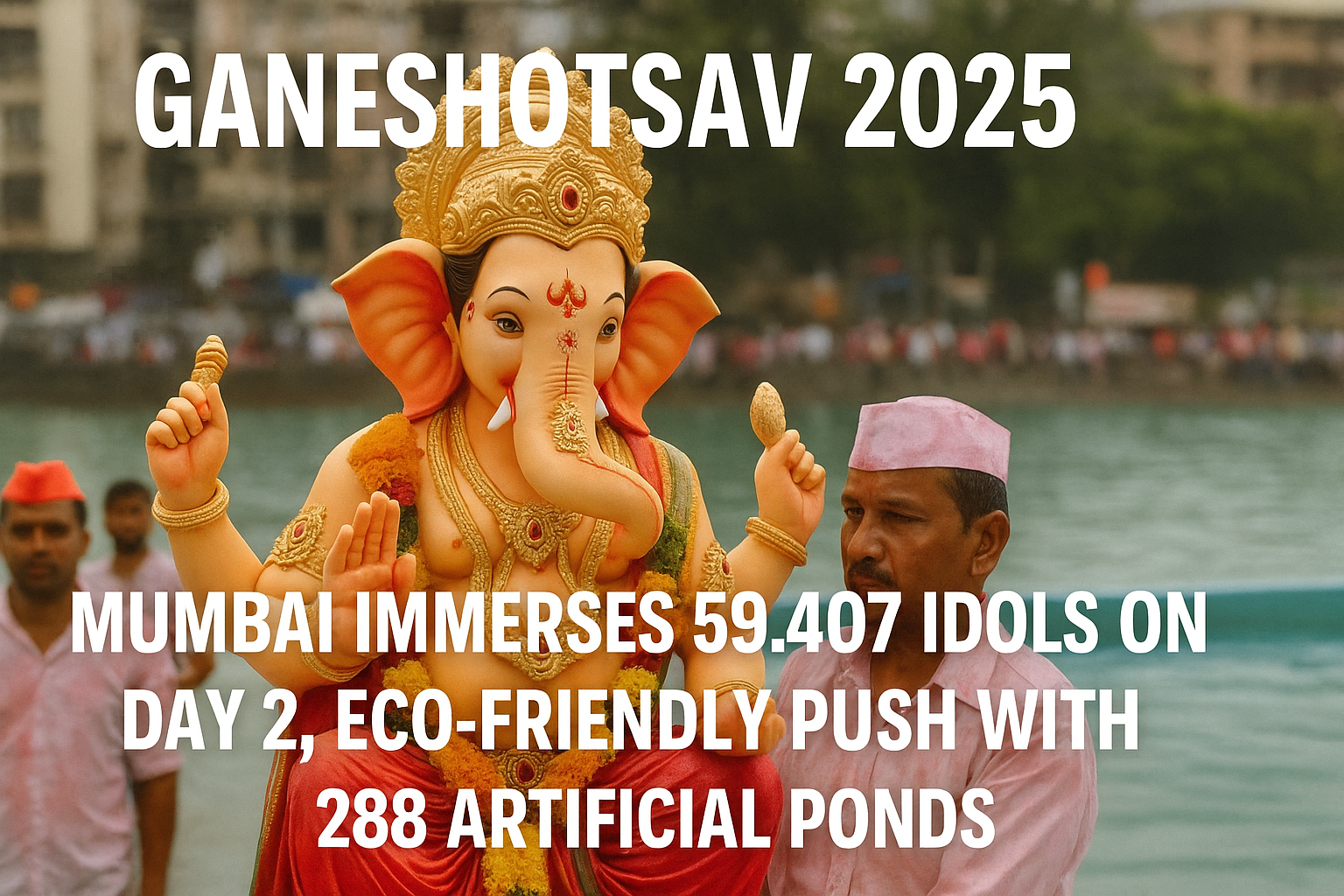
Ganeshotsav 2025: Mumbai Immerses 59,407 Idols on Day 2, Eco-Friendly Push with 288 Artificial Ponds
Mumbai welcomed Ganeshotsav 2025 with grandeur and devotion, and as the festival reached its second day, the city witnessed a massive wave of idol immersions. According to Brihanmumbai Municipal Corporation (BMC), a total of 59,407 Ganpati idols were immersed on Thursday, reflecting both tradition and an increasing shift toward eco-friendly practices.
Out of these immersions, 58,687 were household idols, 697 were Sarvajanik (public) idols, and 23 were Hartalika idols. For many devotees who observe the one-and-a-half-day celebration, the visarjan on the second day is a deeply emotional and spiritual ritual. Encouragingly, authorities confirmed that no untoward incidents were reported during the day-long immersions.
Eco-Friendly Immersions with Artificial Ponds
In a significant step toward sustainability, the BMC installed 288 artificial ponds across the city this year, a sharp rise from 204 last year. This expansion aligns with the Bombay High Court’s directive, which mandates that Plaster of Paris (POP) idols below six feet must be immersed in artificial ponds. The move not only protects natural water bodies but also helps streamline the immersion process for smaller idols.
Taller idols, on the other hand, continue to be allowed for immersion in the sea. However, officials noted that many devotees voluntarily opted for artificial ponds, underscoring a growing awareness and collective effort toward an eco-friendly Ganeshotsav.
The highest concentration of artificial ponds could be found in key wards:
- G-South (Worli) – 24 ponds
- E Ward (Byculla) – 20 ponds
- R-South (Kandivali) – 18 ponds
- F-South (Parel) – 17 ponds
- S Ward (Bhandup) – 15 ponds
- P-South (Goregaon) – 14 ponds
Devotees Choosing Green Options
A BMC spokesperson shared that the final bifurcation of idols immersed in natural water bodies versus artificial ponds is still being compiled. However, early observations suggest a notable increase in the preference for artificial ponds. At many sites, the civic body went a step further by installing LED screens outside immersion points, allowing devotees to watch the immersion of their idols with dignity and transparency.
Long queues were seen at several immersion spots across Mumbai. Devotees, many drenched in monsoon rains, carried idols tenderly in their hands, waiting patiently to perform the last aarti before the farewell ritual. These scenes reflected both devotion and an evolving sense of responsibility toward the environment.
Safety and Civic Preparedness
This year, BMC also enhanced security and crowd management at artificial pond sites. Volunteers from mandals were trained in disaster management techniques, ensuring smooth operations during peak hours. With police, civic staff, and volunteers working together, the day’s visarjan concluded without major disruptions, highlighting the success of coordinated civic planning.
A Festival of Faith and Responsibility
Ganeshotsav in Mumbai is not merely a festival—it is a shared cultural heartbeat that binds the city together. The 59,407 immersions on Day 2 showed how tradition continues to thrive, but in a more thoughtful and environmentally conscious way. The embrace of artificial ponds signals a growing awareness that devotion and responsibility can go hand in hand.
As the city gears up for the longer visarjan days ahead, the trend set on the second day offers hope that eco-friendly celebrations may soon become the norm rather than the exception.





